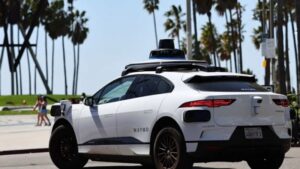Self-driving robotaxis will likely appear in more cities and states this year amid a more favorable federal regulatory environment, industry officials and observers say.
Despite the demise of General Motors’ Cruise robotaxi business in 2024, more than $100 billion in funding has gone to companies engaged in developing and operating robotaxi technology over the past decade, according to a 2024 report by research and consulting firm IDTechEx. These operators face few regulatory barriers, but the industry seeks greater clarity — and they may get that in this Congress.
“What you’re likely to see in 2025 is steady progress with robotaxis, where you see companies like Waymo — but also other companies like Motional and Zoox — that are deploying on a city-by-city basis,” said Jeff Farrah, CEO of the Autonomous Vehicle Industry Association. Uber and Lyft plan to roll out robotaxis in partnership with these and other providers, the ride-hailing companies have said.
 Getty Images
Getty Images
Waymo, considered the leader in this field, began limited self-driving operations in the Phoenix metropolitan area in 2017 and now offers driverless robotaxi service in San Francisco and Los Angeles. The company said riders have taken hundreds of thousands of paid trips since March 2024, and 98% of riders said they were satisfied in a Waymo survey. Waymo is also providing trips to some early riders in Austin, Texas, and will begin serving Atlanta later this year, a spokesperson said. In both cities, Waymo’s fully autonomous vehicles will be available through the Uber app.
The companies behind robotaxis have deep pockets, enabling them to invest in software development, on-the-road testing and expensive sensor technology. Waymo spun out of Google parent Alphabet, Motional is a joint venture between Hyundai Motor Group and Aptiv, and Zoox is owned by Amazon.
Author: Dan Zukowski, Senior Reporter, SmartCities Dive


